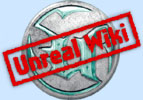Shader
A Shader can alter the appearance of a material by modifying its output blending mode, changing its alpha channel or detail texture, adding a kind of light map or specularity material.
Properties
Editable
- Material Diffuse (editinlineuse)
- The base material. This material's RGB values are used according to the OutputBlending.
- Material Opacity (editinlineuse)
- A material, whose alpha channel will replace the Diffuse material's alpha channel.
- Material Specular (editinlineuse)
- A material that will be added over the Diffuse material. This can be used to create a shining effect.
- Material SpecularityMask (editinlineuse)
- This material's alpha channel specifies, which areas of the Diffuse material are affected by the Specular material.
- Material SelfIllumination (editinlineuse)
- The material will "iluminate" the shader texture. Use the same material as Diffuse to create an "unlit" material.
- Material SelfIlluminationMask (editinlineuse)
- The alpha channel of this material will determine, which parts of the shader will be lit using the SelfIllumination material.
- Material Detail (editinlineuse)
- Specified a material to use as Detail Texture.
- float DetailScale
- EOutputBlending OutputBlending
- An output blending mode. See EOutputBlending enum below.
- bool TwoSided
- Whether the final output should be two-sided.
- bool Wireframe
- Meshes or StaticMeshes using this Shader will always be drawn in wire frame mode.
- bool PerformLightingOnSpecularPass
- bool ModulateSpecular2X
Inherited from Material
- Material FallbackMaterial
- The material to use instead if the Shader can't be rendered, e.g. because the materials used are too cpmplex.
- ESurfaceTypes SurfaceType
- Type of surface.
Hidden
- bool ModulateStaticLighting2X
Enums
EOutputBlending
- OB_Normal
- The Diffuse material's color values are used.
If an Opacity material is specified, that material's alpha channel is used, otherwise the Diffuse material's alpha channel will be used. A FinalBlend might be required to activate the alpha channel. - OB_Masked
- The Diffuse material's color values are used.
Alpha values below 128 are 100% transparent, alpha values of 128 and above are 0% transparent. - OB_Modulate
- The Diffuse material's RGB values are multiplied by the on-screen pixel colors. For this operation color values are divided by 255, so white (1.0) will not change the color, while gray (e.g. 0.5) makes the color half as bright and black (0.0) will turn the color into black as well.
Alpha information is ignored. - OB_Translucent
- The Diffuse material's RGB brightness is used as the resulting material's alpha information. Black is 100% transparent, white is 0% transparent.
- OB_Invisible
- The whole texture is 100% transparent. (Is there any use for something like this?)
- OB_Brighten
- The Diffuse material's RGB values are added to the on-screen pixel colors.
Alpha information is used to "modulate" (see OB_Modulated) the texture before adding its color to the on-screen pixels. - OB_Darken
- The Diffuse material's RGB values are subtracted from the on-screen pixel colors.
I think the alpha channel plays a role here as well. Can someone confirm, please? Answer Needed
Methods
Inherited From Material
- Reset ( )
- Resets the materials used by this shader.
- Trigger (Actor Other, Actor EventInstigator)
- Triggers the materials used by this shader.
